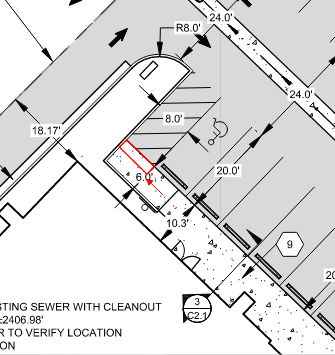Are Tactile Warning Strips required at all ramps regardless of purpose? The specific situation is a ramp coming from a building door to a van accessible loading area next to the parking stall. The ADA accessible route is only building to parking stall. I am guessing it is required but couldn't find the code that shows this specifically. The code focuses on where ramps are directed into vehicle traffic areas.
Is this the applicable code?
 www.access-board.gov
www.access-board.gov
Is this the applicable code?
U.S. Access Board - Chapter R3: Technical Requirements
The U.S. Access Board is a federal agency that promotes equality for people with disabilities through leadership in accessible design and the development of accessibility guidelines and standards for the built environment, transportation, communication, medical diagnostic equipment, and...

